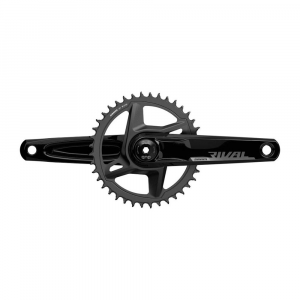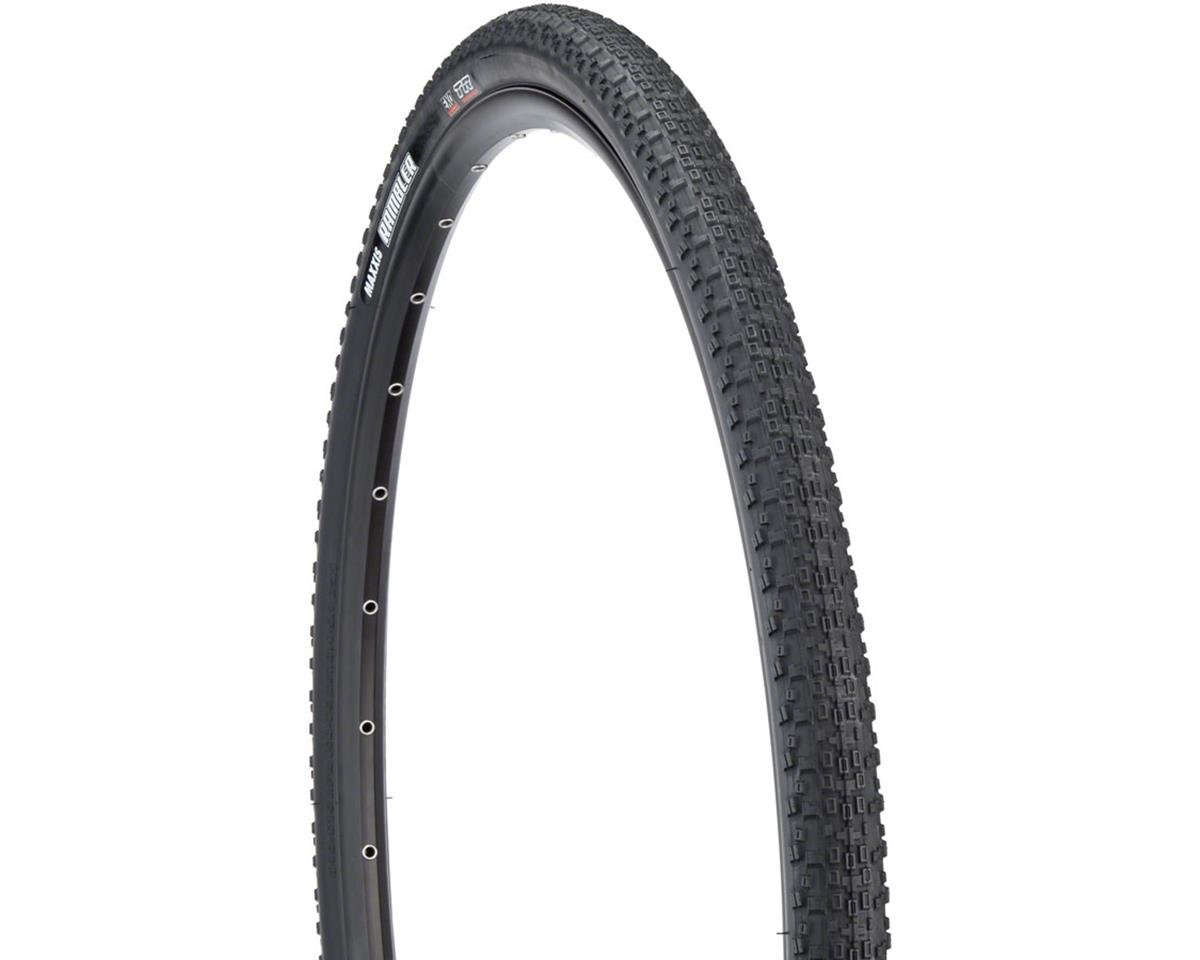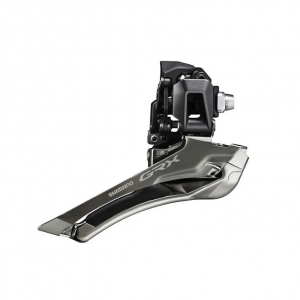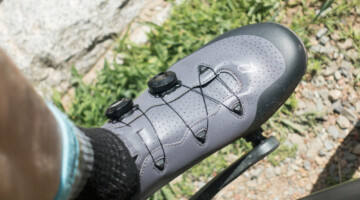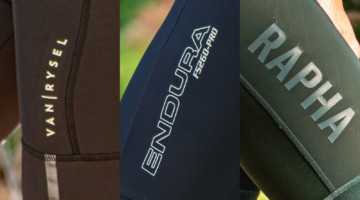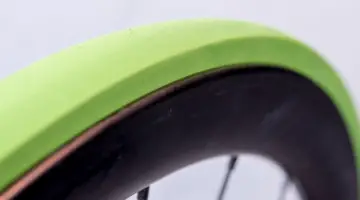The folks here at Cyclocross Magazine can’t get enough of our cyclocross bikes, and usually we find excuses to keep riding them year round. We’ve also heard scary rumors of cyclists who leave their ’cross bikes in a dark corner for six months out of the year. Thankfully, with only six weeks left before cyclocross season is underway, both types of riders are beginning to ramp up to the the season. Today, we bring back an older Mechanical Monday from a little over a year ago about a relatively inexpensive but invaluable upgrade for the season.
Some of us are searching through the latest offerings from companies like Ridley and Alan, looking to start the 2015-16 season with a brand spanking new bike. Others have put aside enough for one or two serious upgrades, such as their first disc-brake compatible tubular wheel set, like the new models from Stan’s NoTubes, or are making the switch to a single chainring now that cassettes keep going wider. Finally, the last group of cyclocross racers are heading into racing season with little to spend, already have a dedicated bike, and want to stretch their dollars out as far as possible.
If you find yourself in this third category, and haven’t jumped on hydraulic braking systems like many riders, you might want to consider an investment in upgraded cables and housing. While a $35-70 upgrade might not sound as flashy as something like an electronic drivetrain, advancements in housing, particularly in new compressionless brake housing, might be the better way to boost your confidence in descents or approach corners with more speed.
What is compressionless brake housing?
The best way to explain compressionless brake housing is to compare traditional brake housing with mechanical derailleur housing, the latter which is also compressionless. If you were to strip the coating off of both sets of housing, you would discover that your brake housing has one flat strand of spiraling wire. It almost looks like a miniature accordion that you could play if you were a member of a polka band for mice. Your compressionless derailleur housing, on the other hand, is composed of over a dozen straight wires, and if you removed the coating, they would look like the light wands they used to sell at the circus.
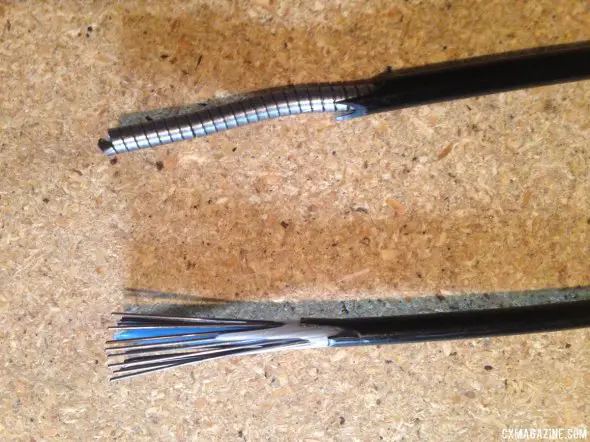
The traditonal compression brake housing is on top, with a spiral cord. On the bottom is an example of noncompression housing you can find in most derailluer housings.
Your brake housing is like a spring whereas derailleur housing is more akin to a bed of nails. A spring gives way, or compresses, when you push your hand against it; the bed of nails, not so much.
The compression in traditional brake housing is often one of the factors that give your brake levers a spongy feel. A small part of the force you are using to pull on the lever is compressing your housing instead of actuating a caliper. Changing your brake housing to a compressionless system will help eliminate part of that spongy feel.
Why hasn’t compressionless brake housing been around for longer?
Compressionless housing has one major drawback. If you created your own brake housing out of the thinner derailleur housing, you might be able to get a few uses out of it before the housing ruptured apart, rendering your brake lever useless at a crucial moment. Unlike index shifting, which doesn’t put a huge strain on the cable, braking typically requires a much greater force. The single strand of spiraling wire which makes up traditional brake housing is comparatively difficult to rupture, and some of this pressure is also relieved when the housing compresses.
A few companies have discovered a solution to this problem. Jagwire has developed their Road Pro kits, which include compressionless brake housing that is reinforced with Kevlar. Yokozuna released their own kit, called the Reaction, where the compressionless strands are surrounded by a spiral wrap. The spiraling metal of the Yokozuna housing encases the rest of the system to protect the housing from a rupture, but unlike traditional housing, it doesn’t compress due to the longitudinal strands at the system’s innards. Both systems offer a more compressionless braking experience compared to the traditional housing, albeit at a price higher than a standard cable and housing set.
Anything I should know about installation?
Jagwire’s Road Pro set is more affordable, but there have been some concerns that the brake housing is difficult to cut due to the Kevlar lining. This is the perfect opportunity to invest in a dedicated cable cutter. By dedicated, we mean a cutter that you won’t also use on zip-ties, miscellaneous house projects, or anything else which will dull the sheers. A well-maintained cable cutter should cut through the Kevlar with little problem.
Don’t cut compressionless brake housing by matching it to the length of your old housing! Both Jagwire and Yokozuna’s systems are much stiffer than compression brake housing. Because of this, the bends in the cable will likely need to be a little more gradual (meaning you will need a slightly longer length of housing to work with).
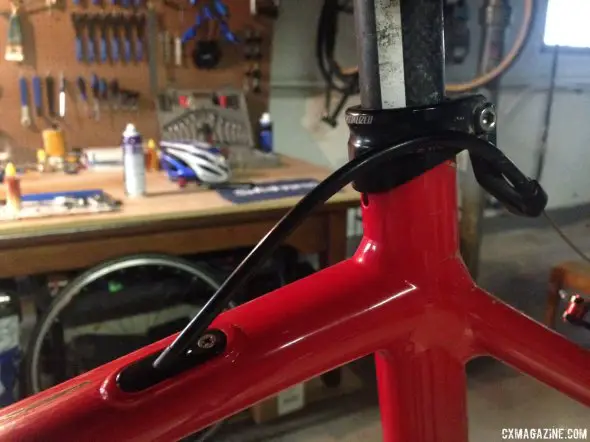
The bend in the brake housing, shown here, is gradual enough for compressionless housing. A bend any more dramatic than this, however, might be difficult to pull off due to the stiffness in compressionless housing.
Finally, just like mechanical derailleur housing, you should never finish a cut on compressionless brake housing with a bench grinder or a Dremel. The Yokozuna Reaction might need a light touch with a flat file if the external spiral wire received a rough cut, but taking power grinders to compressionless housing is a quick way to blow apart the ends.
The Takeaway of Compressionless Housing:
Just as we mentioned in our first look at Hayes’s mechanical disc brake systems (which come equipped with the new Jagwire housing), compressionless brake housing is an incredible way to get the most out of mechanical disc brakes. Those of you who are still running cantilevers will notice the difference as well. Compressionless brake housing is the obvious choice for those who don’t have cable-stops on their cross rigs, and are thus required to run a full length of housing from the lever to the rear caliper.
The only riders who might want to ignore this latest upgrade are those who have a frame that requires extremely tight bends in the housing. Usually the tightest bends occur between the top tube cable-stop and the cable hanger over the rear brake caliper. If you find yourself forced to use compression housing for these small segments, it still might be worth changing over the rest of your brake housing to a compressionless system. Another tight section occurs from the front brake lever to the head tube cable-stop, although this can be solved by replacing the head tube cable-stop hanger for one with a longer reach.
Both Jagwire’s Road Pro ($48.99) and Yokozuna’s Reaction ($70) might come with a surprising price tag, but as any dedicated cross mechanic will tell you, you will need to replace your cables and housing with each season anyway, and compressionless brake housing is the perfect choice for a comparatively inexpensive upgrade.
Stay tuned for more Mechanical Mondays to come on cxmagazine.com.













